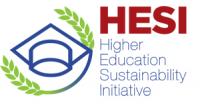Environmental Conservation for Sustainable Urban and rural Development
Description
Continued commitment to projects already underway.Arrangements for Capacity-Building and Technology TransferCoordination mechanisms/governance structureMeans of implementation Target 15.a requires to “mobilize and significantly increase from all sources financialresources to conserve and sustainably use biodiversity and ecosystems”. Financialmeans are pertinent for implementing measures and compensating developing countriesfor restraint in the exploitation of natural resources and the concurrent conservation ofecosystem services, especially with a view to carbon sinks and biodiversity hotspots.The target as such is adequate, but to be considered ambitious it would need to be speltout in much more detail. Target 15.b requires to “mobilize significantly resources from all sources and at alllevels to finance sustainable forest management, and provide adequate incentives todeveloping countries to advance sustainable forest management, including forconservation and reforestation”. Thus, the target follows Target 15.a but with adedicated view on forests. Again, to be considered ambitious, the target would need tobe spelt out in much more specific detail. Target 15.c requires to “enhance global support to efforts to combat poaching andtrafficking of protected species, including by increasing the capacity of localcommunities to pursue sustainable livelihood opportunities”. This is adequatelyfocussed, as it addresses an important driver of illegal exploitation of biodiversity. Yet,it fails to address the control of trade in illegal trade with pertinent products andcommensurate capacities in law enforcement. Without such means, poaching andtrafficking are bound to remain profitable, even where alternative livelihoodopportunities exist
Environmentally sound technologies are not just individual technologies, but totalsystems which include know-how, procedures, goods and services, and equipment aswell as organizational and managerial procedures. This implies that when discussingtransfer of technologies, the human resource development and local capacity-buildingaspects of technology choices, including gender-relevant aspects, should also beaddressed. Environmentally sound technologies should be compatible with nationallydetermined socio-economic, cultural, and environmental priorities. 1. Environmentally sound technologies protect the environment, are less polluting,use all resources in a more sustainable manner, recycle more of their wastes andproducts, and handle residual wastes in a more acceptable manner than thetechnologies for which they were substitutes. 2. Environmentally sound technologies in the context of pollution are "process andproduct technologies" that generate low or no waste, for the prevention of pollution.They also cover "end of the pipe" technologies for treatment of pollution after it hasbeen generated.
Suez Canal University was responsible and takes a lead as coordination for all environmental projects based on Community-based Ecosystems.
SDGS & Targets
Goal 15
Protect, restore and promote sustainable use of terrestrial ecosystems, sustainably manage forests, combat desertification, and halt and reverse land degradation and halt biodiversity loss
15.1
By 2020, ensure the conservation, restoration and sustainable use of terrestrial and inland freshwater ecosystems and their services, in particular forests, wetlands, mountains and drylands, in line with obligations under international agreements
15.1.1
15.1.2
15.2
By 2020, promote the implementation of sustainable management of all types of forests, halt deforestation, restore degraded forests and substantially increase afforestation and reforestation globally
15.2.1
15.3
By 2030, combat desertification, restore degraded land and soil, including land affected by desertification, drought and floods, and strive to achieve a land degradation-neutral world
15.3.1
15.4
By 2030, ensure the conservation of mountain ecosystems, including their biodiversity, in order to enhance their capacity to provide benefits that are essential for sustainable development
15.4.1
15.4.2
15.5
Take urgent and significant action to reduce the degradation of natural habitats, halt the loss of biodiversity and, by 2020, protect and prevent the extinction of threatened species
15.5.1
15.6
Promote fair and equitable sharing of the benefits arising from the utilization of genetic resources and promote appropriate access to such resources, as internationally agreed
15.6.1
15.7
Take urgent action to end poaching and trafficking of protected species of flora and fauna and address both demand and supply of illegal wildlife products
15.7.1
15.8
By 2020, introduce measures to prevent the introduction and significantly reduce the impact of invasive alien species on land and water ecosystems and control or eradicate the priority species
15.8.1
15.9
By 2020, integrate ecosystem and biodiversity values into national and local planning, development processes, poverty reduction strategies and accounts
15.9.1
(a) Number of countries that have established national targets in accordance with or similar to Aichi Biodiversity Target 2 of the Strategic Plan for Biodiversity 2011–2020 in their national biodiversity strategy and action plans and the progress reported towards these targets; and (b) integration of biodiversity into national accounting and reporting systems, defined as implementation of the System of Environmental-Economic Accounting
15.a
Mobilize and significantly increase financial resources from all sources to conserve and sustainably use biodiversity and ecosystems
15.a.1
(a) Official development assistance on conservation and sustainable use of biodiversity; and (b) revenue generated and finance mobilized from biodiversity-relevant economic instruments
15.b
Mobilize significant resources from all sources and at all levels to finance sustainable forest management and provide adequate incentives to developing countries to advance such management, including for conservation and reforestation
15.b.1
(a) Official development assistance on conservation and sustainable use of biodiversity; and (b) revenue generated and finance mobilized from biodiversity-relevant economic instruments
15.c
Enhance global support for efforts to combat poaching and trafficking of protected species, including by increasing the capacity of local communities to pursue sustainable livelihood opportunities
15.c.1
SDG 14 targets covered
| Name | Description |
|---|
Deliverables & Timeline
Resources mobilized
Partnership Progress
Feedback
Action Network


Timeline
Entity
SDGs
Geographical coverage
Website/More information
Countries

Contact Information
Atef Ahmed, Professor and Head of Wildlife Conservation Department
